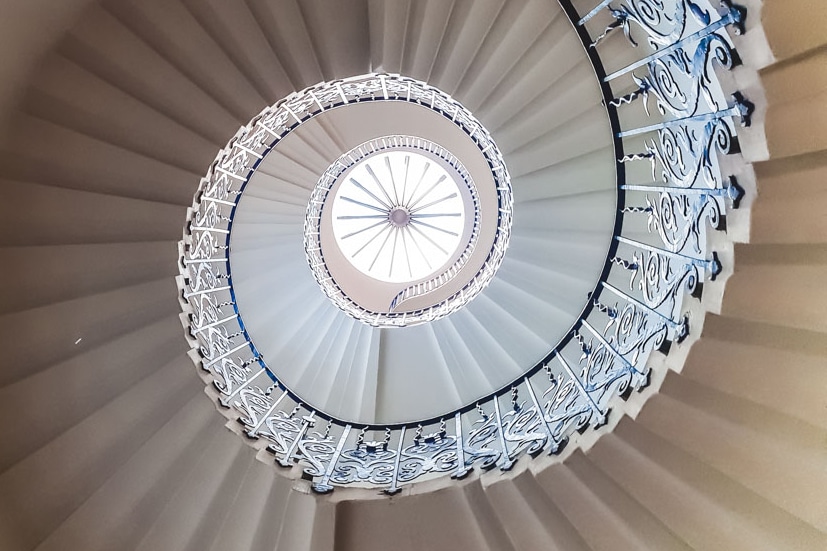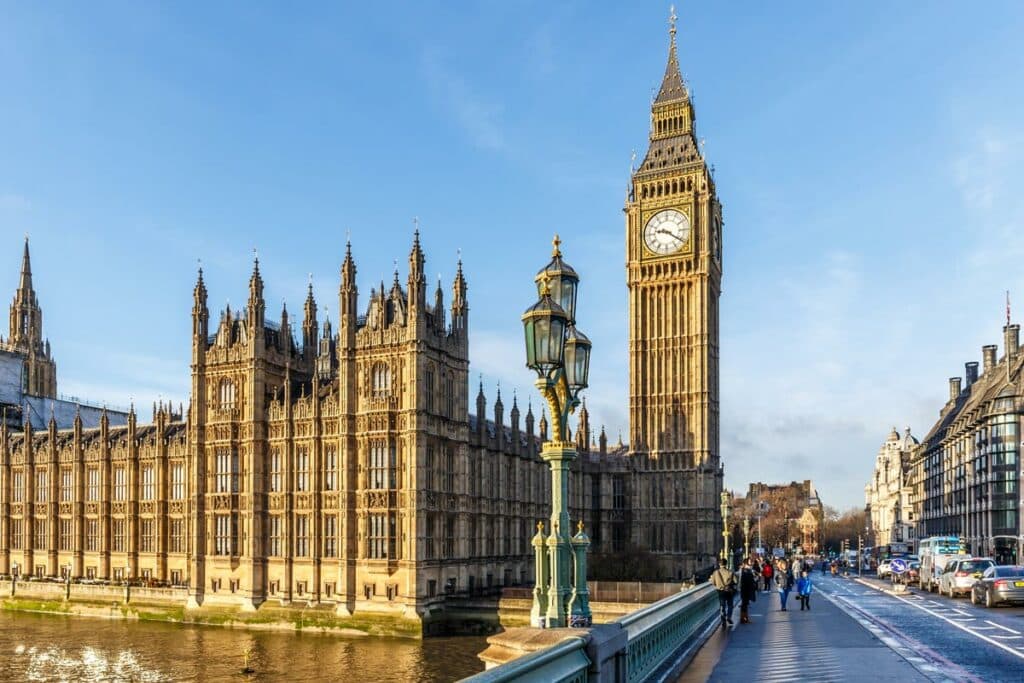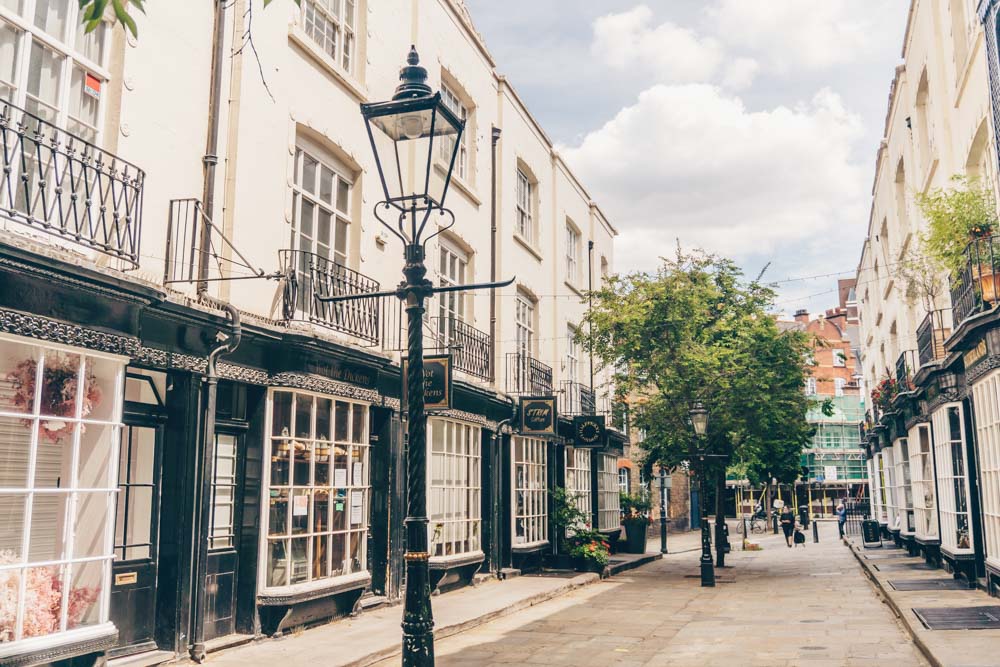Tucked inside The Queen’s House, you’ll find the gorgeous Tulip Stairs – a winding spiral staircase with a rather interesting history…
Architectural buffs and Instagrammers alike will delight in The Queen’s House in Greenwich, the first wholly classical building in England.
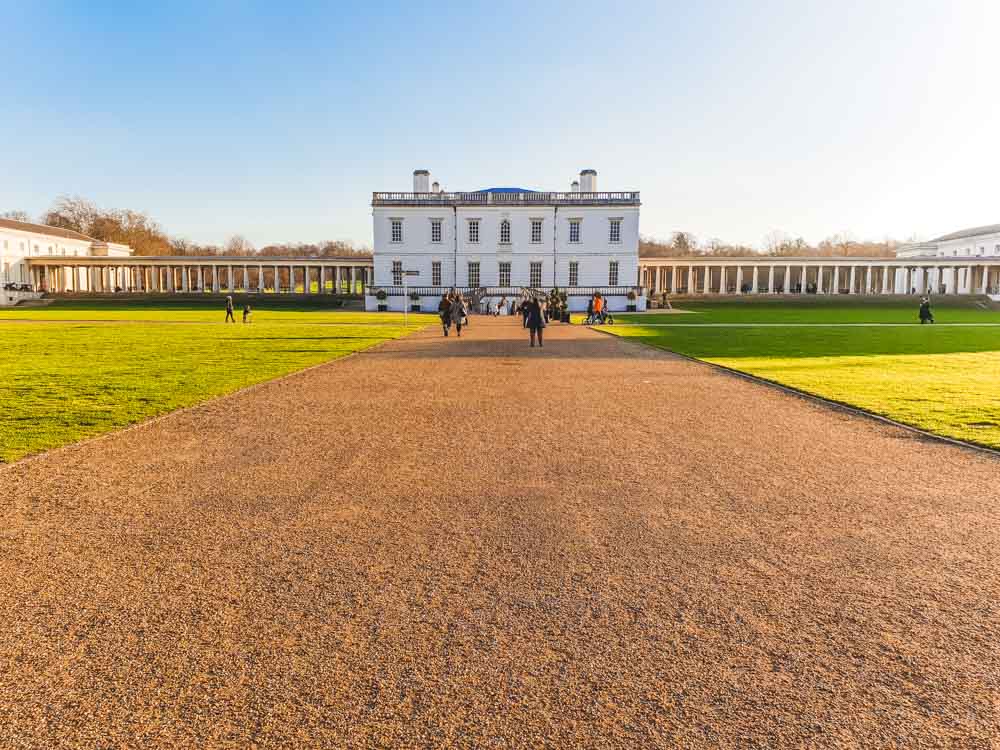
Designed by architect Inigo Jones, The Queen’s House was initially intended as a residence for Anne of Denmark, Queen Consort to King James I.
Unfortunately, Anne died in 1616, well before the building was finished. Construction was paused until 1629 when it resumed, this time as a residence for Queen Henrietta Maria, Charles I’s wife and was completed in 1635.
It’s one of the city’s lesser-known gems, despite being home to an important art collection that features, at its pinnacle, Elizabeth I’s striking Armada portrait.
The Tulip Stairs
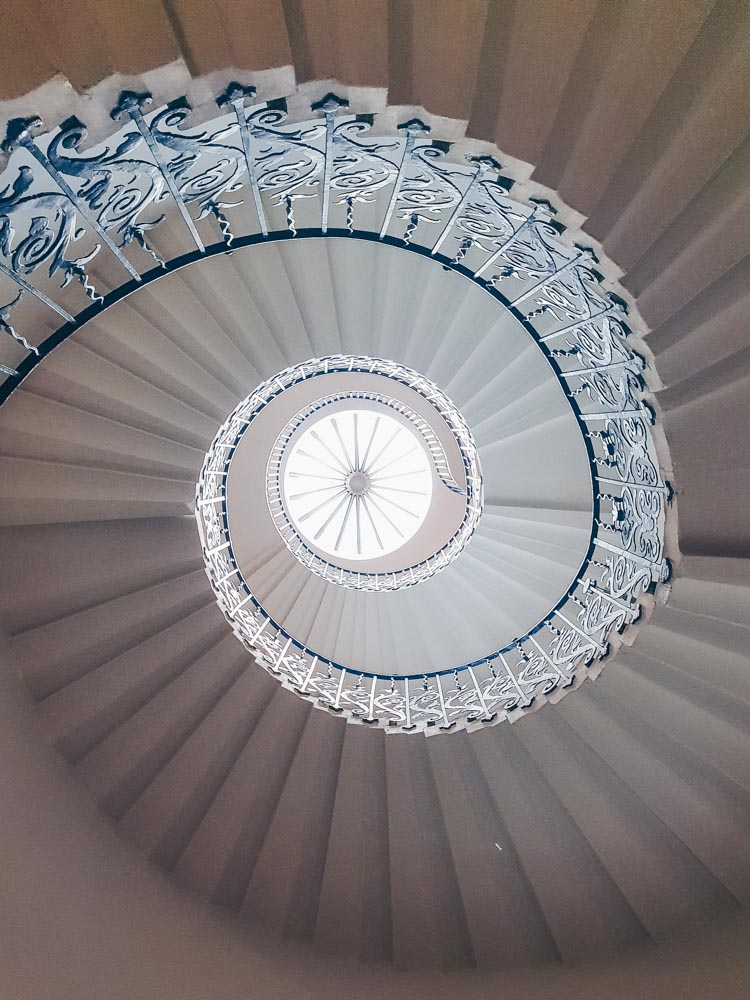
Delve yet deeper into The Queen’s House to find The Tulip Stair, so called because of the intricate motifs on the iron railings (though these are in fact, fleur de lys – the emblem of Henrietta Maria’s family, not tulips at all). As the first cantilevered spiral geometric staircase in the UK, the Tulip Stair is an architectural feat.
Jones was strongly influenced by the work of the 16th century architect Andrea Palladio, taking the classical designs and concept of a self-supporting spiral staircase with no central column espoused by Palladio to incorporate into his own work on The Queen’s House.
Instead of a central support, Jones’ mason Nicholas Stone came up with an innovative solution whereby steps were interlocked, each providing the next with support.
Interesting as that is, the staircase garners more attention for its looks – light flooding the stairwell from the centralised window and the elaborate ironwork, it’s an elegant piece of architecture that still enchants visitors today.
Ghost Stories
It’s easy to imagine why people would claim old buildings like Queen’s House are haunted – the empty rooms and aged furniture, perhaps a tormented soul in the family tree. Few have actual picture evidence to prove it. Whether you believe in ghosts or not, the story of the haunting at Queen’s house is a creepy one.
It happens surprisingly recently for a tale of haunting, the year 1966. Our protagonists: a retired Canadian reverend and his wife, a one Mrs. R W Hardy. They were in the UK on holiday, poking around the sites of Greenwich.
The Reverend had heard of the famous Tulip Stairs and, struck by their beauty, snapped a photograph. It wasn’t till much later when the couple developed the photo that they noticed the presence of a ghostly figure in its frame.
The figure appears to be chasing a second, and possibly third, spectral shape up the stairs. The Reverend and his wife were steadfast in their claims that when they took the picture, the stairs were completely empty…
An Investigation into Paranormal Happenings
This encounter inspired paranormal investigation bureau, The Ghost Club, to come in and investigate. They donned rubber-soled shoes, took notes and shone torches, even syncing watches to ensure accurate recordings, settled in for the night hoping to make contact with a séance.
Nothing came of the investigation and the case was eventually closed. There are no ghosts on the Tulip Stairs.
But then how does that explain the 2002 sighting from this unnamed Gallery Assistant who saw a figure “gliding across a balcony, dressed in an old-fashioned, white-grey dress and passing through a wall…”
Practical Information and Map For Visiting The Tulip Stairs
Address: Queen’s House, Romney Rd, Greenwich, London SE10 9NF
Opening Times: Every day 10am – 5pm

